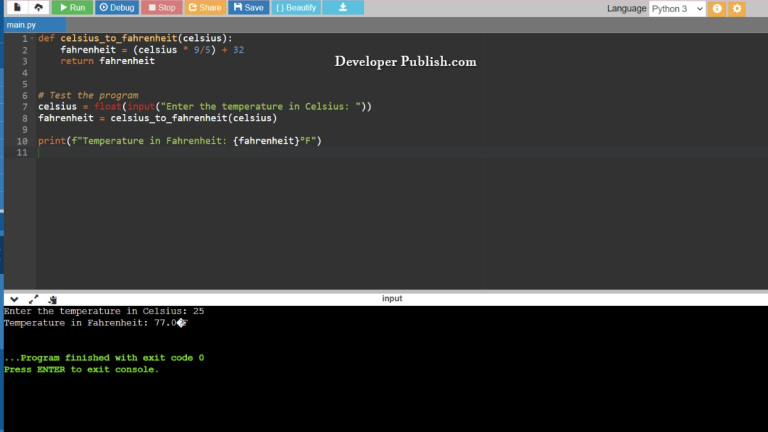This Python program finds the Minimum Spanning Tree (MST) of a weighted, connected graph using Prim’s algorithm. The MST is a subset of edges that connects all vertices with the minimum possible total edge weight.
Prim’s Algorithm is a greedy algorithm used in graph theory to find the Minimum Spanning Tree (MST) of a connected, weighted graph. A Minimum Spanning Tree of a graph is a subgraph that includes all the vertices of the original graph while minimizing the total weight or cost of the edges. It’s often used in various applications like network design, clustering, and optimization problems.
Problem Statement
Solve the Problem using the Minimum Spanning Tree (Prim’s Algorithm)
Python Program to Find Minimum Spanning Tree using Prim’s Algorithm
import sys
class Graph:
def __init__(self, vertices):
self.V = vertices
self.graph = [[0 for _ in range(vertices)] for _ in range(vertices)]
def min_key(self, key, mst_set):
min_val = sys.maxsize
min_index = None
for v in range(self.V):
if key[v] < min_val and not mst_set[v]:
min_val = key[v]
min_index = v
return min_index
def prim_mst(self):
parent = [None] * self.V
key = [sys.maxsize] * self.V
key[0] = 0
mst_set = [False] * self.V
parent[0] = -1
for _ in range(self.V):
u = self.min_key(key, mst_set)
mst_set[u] = True
for v in range(self.V):
if self.graph[u][v] and not mst_set[v] and key[v] > self.graph[u][v]:
key[v] = self.graph[u][v]
parent[v] = u
self.print_mst(parent)
def print_mst(self, parent):
print("Edge \tWeight")
for i in range(1, self.V):
print(f"{parent[i]} - {i} \t{self.graph[i][parent[i]]}")
g = Graph(5)
g.graph = [[0, 2, 0, 6, 0],
[2, 0, 3, 8, 5],
[0, 3, 0, 0, 7],
[6, 8, 0, 0, 9],
[0, 5, 7, 9, 0]]
g.prim_mst()
How it Works
- Initialization:
- Choose an arbitrary starting vertex as the initial MST. This vertex is added to the
MSTSet, a set that keeps track of vertices already included in the MST. - Initialize two data structures:
Key: A list or array that stores the minimum weight of edges connecting vertices inMSTSetto vertices outside it. Initially, set theKeyvalue to infinity for all vertices except the starting vertex, which is set to 0.Parent: A list or array that keeps track of the parent of each vertex in the MST. Initially, set the parent of all vertices to None.
- Choose an arbitrary starting vertex as the initial MST. This vertex is added to the
- Greedy Selection:
- Find the vertex
uthat is not inMSTSetand has the minimumKey[u]value. This vertexuwill be added to the MST next. TheKeyvalues effectively represent the weight of the shortest edge connecting each vertex outside the MST to a vertex in the MST.
- Find the vertex
- Update Keys:
- For each vertex
vadjacent tou(i.e., connected by an edge), check if the weight of the edgeu-vis less than the currentKey[v]. If it is, updateKey[v]with the weight of the edgeu-v. This step ensures that you always select the minimum-weight edge to expand the MST.
- For each vertex
- Add Vertex to MST:
- Add vertex
uto theMSTSet. This means thatuis now part of the Minimum Spanning Tree.
- Add vertex
- Repeat:
- Repeat steps 2-4 until all vertices are included in the
MSTSet. At this point, you’ve constructed the Minimum Spanning Tree. TheParentdata structure will also allow you to reconstruct the tree’s edges.
- Repeat steps 2-4 until all vertices are included in the
- Output:
- The Minimum Spanning Tree consists of the edges that were selected during the algorithm. These edges form a connected subgraph with the minimum total weight among all possible spanning trees of the input graph.
Input/ Output



